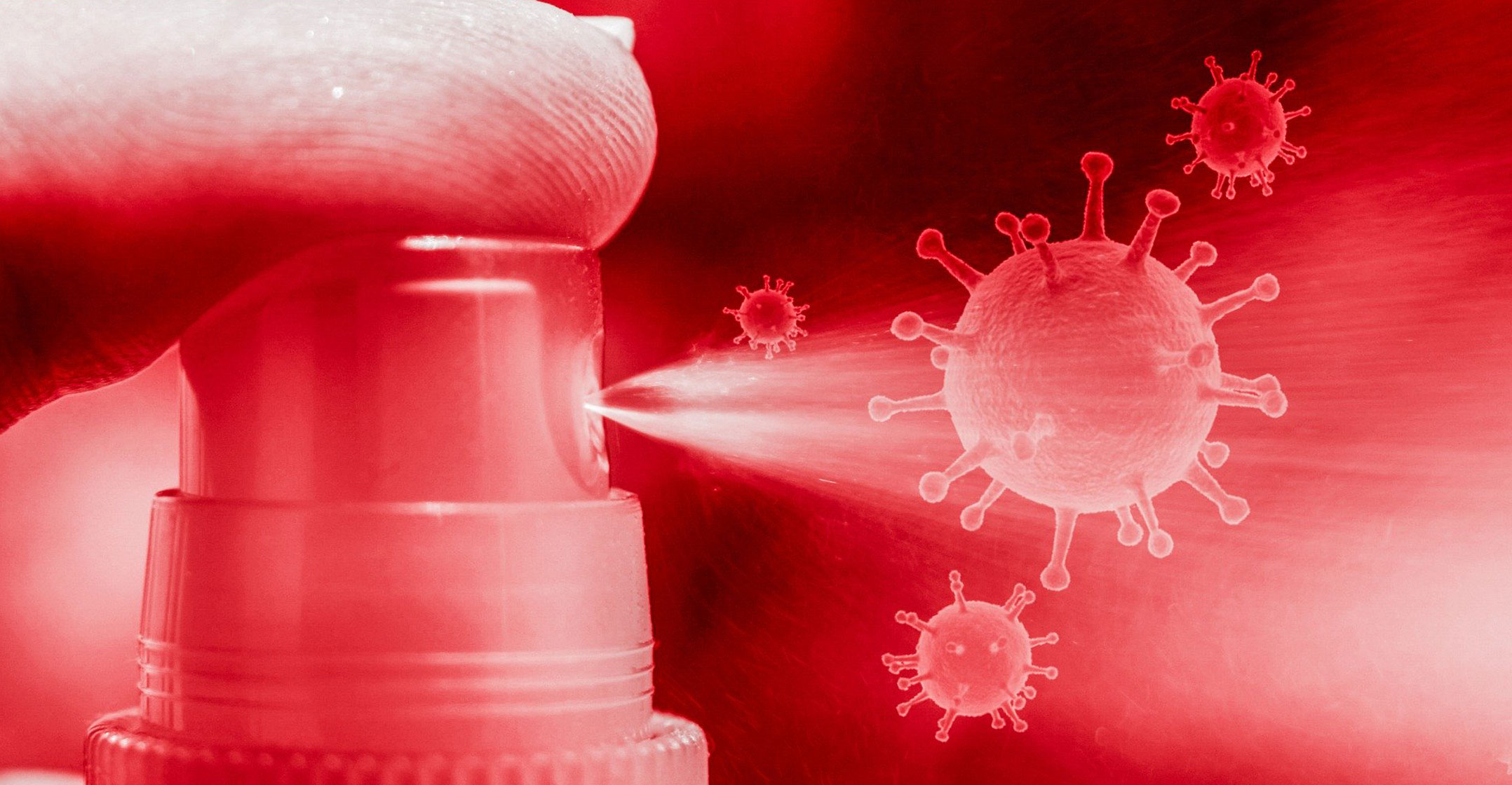 South Africa has aggressively intervened to contain the local Sars-CoV-2 viral epidemic. But it is far from clear which strategic outcome is being pursued. Is it following the lead of countries such as New Zealand or South Korea and trying to stop virus transmission altogether until a suitable vaccine becomes available? Or is it attempting to manage the infection rates so that extreme peaks in morbidity are prevented?
South Africa has aggressively intervened to contain the local Sars-CoV-2 viral epidemic. But it is far from clear which strategic outcome is being pursued. Is it following the lead of countries such as New Zealand or South Korea and trying to stop virus transmission altogether until a suitable vaccine becomes available? Or is it attempting to manage the infection rates so that extreme peaks in morbidity are prevented?
As the government’s strategy is not explicit, the intervention framework implemented so far appears consistent with a wide range of possible policy objectives. The rapid emergence of the pandemic defaulted policy to intervene first and ask questions later. But the dust is now settling, and the strategic endgame can and should be made transparent.
Any strategy requires a rational combination of what is known with what isn’t. What’s not known includes the possible outcomes of interventions, as well as contingencies that can materially influence the trajectory of the disease. Given the substantial uncertainties of disease elimination, South Africa should adopt at least a multi-year strategic perspective – that is the time until a vaccine or treatment is probable and has been implemented.
The strategy should, however, allow for the possibility that each month introduces more certainty about the success of public health interventions and the options for treatment and vaccines.
We discuss three possible approaches, and consider the efficacy of each.
What’s known, and what’s not known
The various options mapped out below take into account what is known, and what’s not known.
What’s known? First, the SARS-CoV-2 virus is highly infectious. In the absence of interventions it has an average reproduction rate (R or R0) every four days of roughly 2.5. Infections are also associated with levels of morbidity and mortality that make an active public health response necessary.
Second, no vaccine is available yet and no drug has been shown to prevent transmission of the virus.
Third, no virus-specific treatments exist to mitigate the current levels of morbidity.
Fourth, the complexity of the economic and social problems arising from general lockdowns means it is very difficult to rely on extended lockdowns without creating a new range of severe socioeconomic problems.
Where does uncertainty lie?
First, the extent to which reliance can be placed on social distancing and lockdown strategies in South Africa’s high-density, poor and informal settlements is in question.
Second, South Africa appears unable to get testing to the levels necessary to successfully manage a health prevention strategy based on testing and contact tracing. This is true of a number of well-resourced countries, too.
It is also unclear whether South Africa is able to ramp up testing, and associated isolation of those infected or their contacts, to the level needed to stay ahead of the epidemic during the course of 2020.
 Third, it is unclear when a vaccine will become available. Even under ideal circumstances, it is likely that it will only be available for wider use in 2021. And even with the development of suitable vaccines, it may still take years to eliminate the virus.
Third, it is unclear when a vaccine will become available. Even under ideal circumstances, it is likely that it will only be available for wider use in 2021. And even with the development of suitable vaccines, it may still take years to eliminate the virus.
Fourth, therapeutic options based on existing treatments, which could be available soon, are still speculative and unlikely to prove wholly successful.
Fifth, therapeutic options based on new technologies are unlikely to be available in South Africa until the latter part of 2021.
Strategic options
Option 1 is to target complete disease control within 2020, without waiting for a successful treatment or vaccine to be introduced. This would require that public health interventions achieve a sustained reproduction rate of the disease (R) below 1. This would require selective, targeted lockdowns, ongoing social distancing and high rates of population testing, tracing and quarantining.
Option 2 is to keep new infections relatively low, but accept that the epidemic will continue until a vaccine or some other treatment becomes available. This strategy would require keeping the R at around 1, by limiting daily, countrywide new infections to roughly 250 to 300. This approach is premised on the assumption that no public health approach, or other intervention, will be able to eliminate the epidemic in 2020, and also not completely in 2021. It assumes that a combination of treatment and vaccinations will eliminate the virus during the course of 2021.
Option 3 is to keep new infections sufficiently low that they prevent excessive morbidity at any point in time to avoid health services becoming overwhelmed, but sufficiently high as to achieve early herd immunity within, say, the next 18 months. While this approach assumes an average R of more than 1 for an initial period and roughly 1 thereafter, the daily levels of new infections would be higher than option 2, but should still be kept manageable using targeted public health interventions.
Process of elimination
Of the above, the third option – allowing infections to rise to achieve herd immunity – is ill-advised, at least for now. To achieve herd immunity over a period of just two years, assuming that only 60% of the population would need to have achieved immunity, would require roughly 51 000 new infections per day. At these levels it can be expected that more than 2 500 people will require hospitalisation each day and that approximately 500 will require intensive care, most of whom would die.
This option can also be rejected on rational grounds. If it is possible to maintain the R at about 1 over an extended period using public health interventions without undue economic hardship, it makes sense to manage a lower rather than a higher and more risky level of infections.
This leaves options 1 and 2. The choice comes down to what is achievable with South Africa’s public health and economic capacities and capabilities. Both options, however, must be compatible with the maintenance of a functioning economy.
A generalised lockdown is unlikely to succeed as a preventive option in the South African context. As a result, much depends on whether more focused public health measures — such as testing and contact tracing, social distancing, employer health protocols, generalised requirements to wear masks and border management — are sufficient to hold R at 1 or below 1. If these interventions can’t be relied on, the outlook for South Africa would be bleak, as a runaway epidemic would be more, rather than less, probable. The de facto consequence would be option 3.
But it’s plausible that a strategy that is able to maintain a low level of daily new infections over a two-year period could hold out the opportunity for disease elimination if public health prevention improves over time.
For instance, while significant constraints exist to scale up testing in the short term, these can reasonably be expected to lift progressively over a 12-month period. Similarly, it is not unreasonable to expect the specificity and speed of contact tracing and quarantining to improve over time. It is also common sense for testing priority to be given to communities where transmission risks are highest – such as townships and informal settlements.
The direct costs of many of these interventions may appear large. But when compared to the indiscriminate impact of a general lockdown, the additional resources required pale into insignificance.
Conclusion
The current best option is for the government to pursue option 2 as a minimum strategic goal – keep new infections relatively low, but accept that the epidemic will continue until a vaccine or some other treatment becomes available to allow for societal immunity. With a continuous expansion of key public health interventions, such as testing, tracing and quarantining, this approach also offers some hope of achieving option 1 – to target complete disease control within 2020.
Keeping open the option of disease control through targeted public health measures within 2020 is plainly worthwhile, even if it is far from certain until treatment and vaccine options become more concrete.![]()
- Written by Alex van den Heever, chair of social security systems administration and management studies, adjunct professor in the school of governance, University of the Witwatersrand; Imraan Valodia, dean of the faculty of commerce, law and management, and head of the Southern Centre for Inequality Studies, Wits; Lucy Allais, professor of philosophy, Wits; Martin Veller, dean of the faculty of health sciences, Wits; and Willem Daniel Francois Venter, Ezintsha, faculty of health sciences, Wits
- This article is republished from The Conversation under a Creative Commons licence




